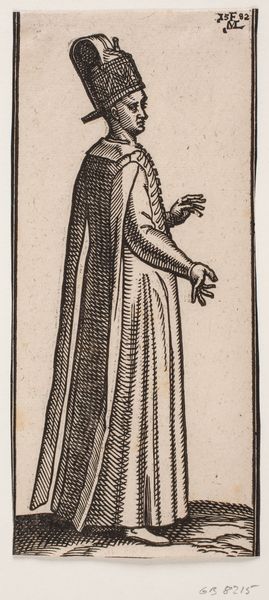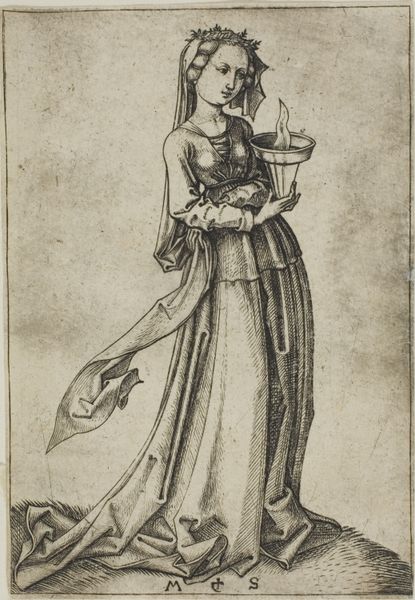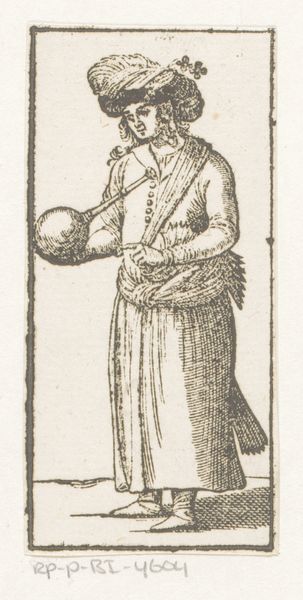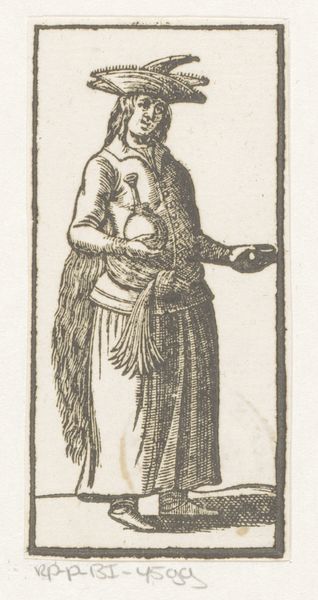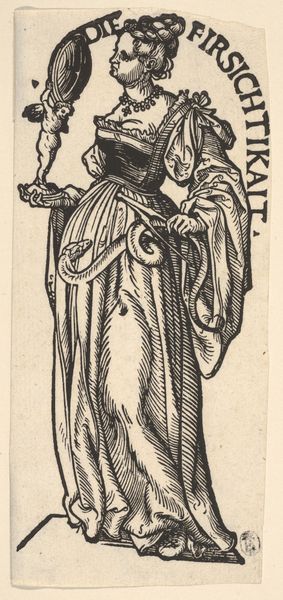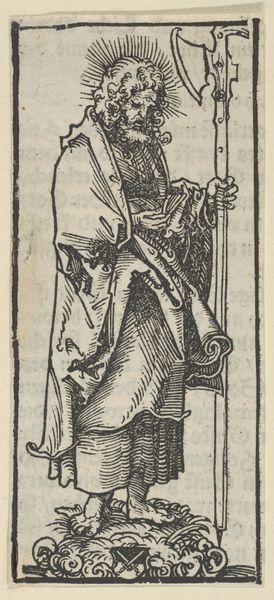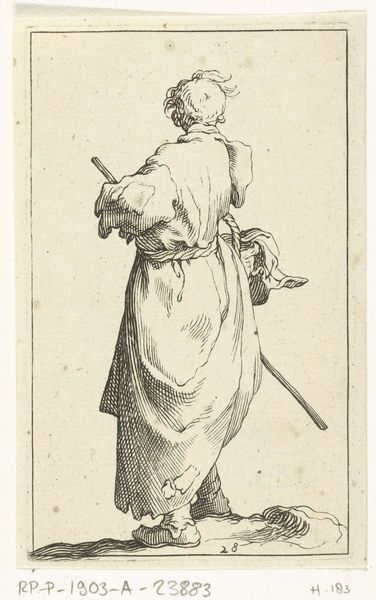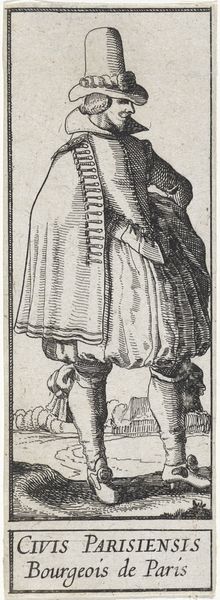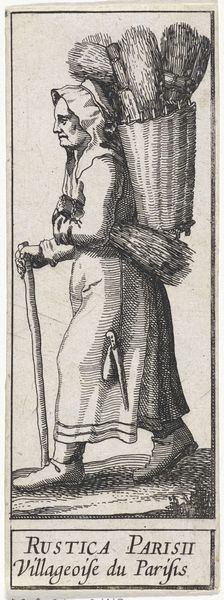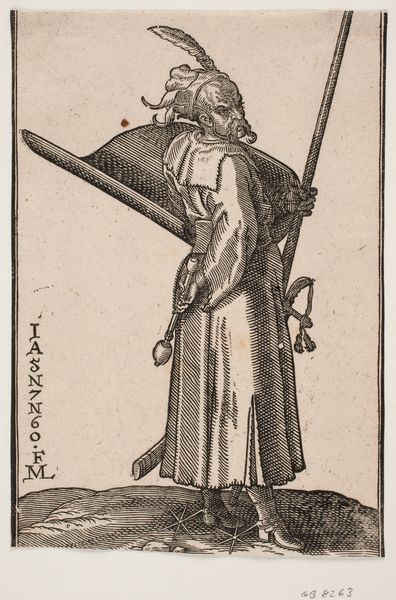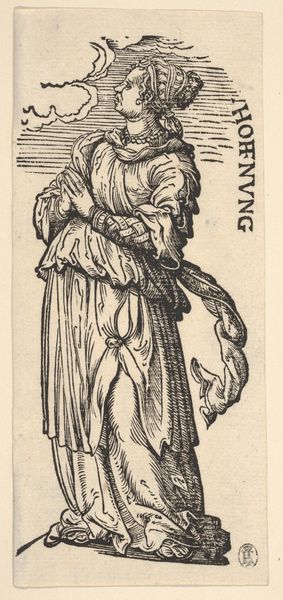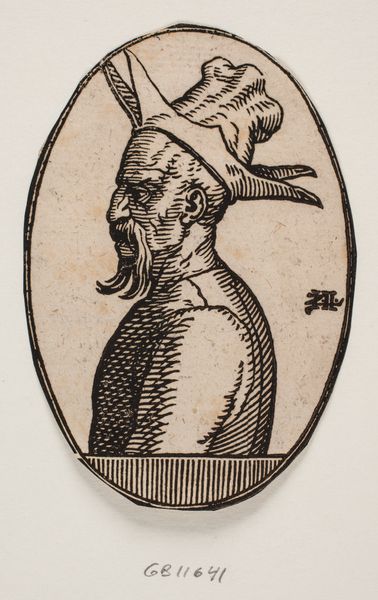
Temperance (Die Mesikait), from The Seven Virtues 1498 - 1531
0:00
0:00
drawing, print, woodcut
#
drawing
#
allegory
# print
#
figuration
#
woodcut
#
northern-renaissance
Dimensions: Sheet: 6 13/16 × 3 1/4 in. (17.3 × 8.2 cm)
Copyright: Public Domain
Editor: Here we have Hans Burgkmair's "Temperance," also known as "Die Mesikait," a woodcut print dating back to the early 16th century. The figure is so carefully detailed. What do you see in this piece that speaks to its historical context? Curator: Well, consider what Temperance represented in the socio-political landscape of the Renaissance. More than just abstaining, it reflected civic ideals and self-governance, key for a stable society. Burgkmair, working during the Reformation, engages with ideas around virtue and control, as Protestant reformers sought to challenge societal power. Notice the woman's controlled pouring of liquid from one vessel to another. What could that symbolize beyond the simple virtue of moderation? Editor: Perhaps it is also about managing resources wisely during times of conflict and change? This was a time of massive political upheaval, so the controlled movement you mention could stand for finding stability. Curator: Precisely! Moreover, consider where it would have been displayed. Prints like these were relatively accessible, circulated among the burgeoning merchant class, helping spread the Renaissance interest in civic humanism, in stark opposition to other means of religious iconography that may have seemed, or literally were, far above the reach of most people. Editor: So, the medium itself, a print, contributes to our understanding. Was Burgkmair commenting on who had access to images of virtue? Curator: Exactly! He’s not simply depicting Temperance, but also democratizing its image. A virtue once confined to the elite is now circulated for broader consumption and interpretation. Editor: That gives me so much to think about! I didn't realize the choice of the printing press itself made a political statement about images of virtue. Thanks for sharing this!
Comments
No comments
Be the first to comment and join the conversation on the ultimate creative platform.
